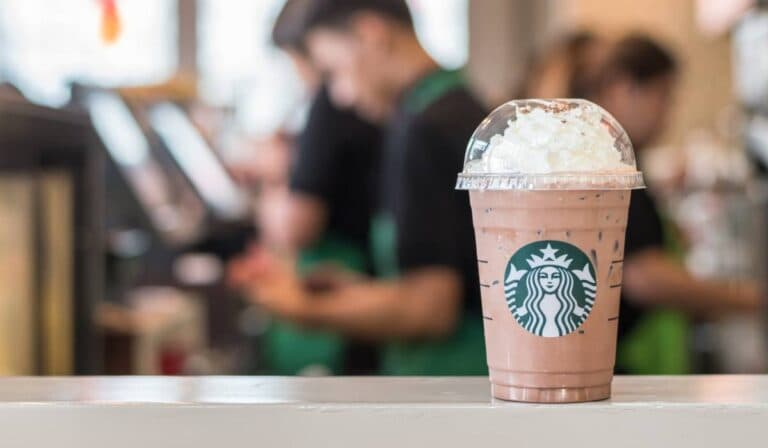
The Fix at Starbucks Had to Start with Mobile Ordering
For years, Starbucks has prided itself on being a “third place” for its customers—a spot between home and work where people can linger over handcrafted coffee and enjoy a sense of community. But in recent years, the experience at Starbucks had begun to feel more like an airport terminal at peak holiday rush than a calm, inviting café.The culprit? Mobile ordering.What was initially a groundbreaking convenience quickly became a logistical nightmare. Lines were long. Counters were cluttered with abandoned drinks. Baristas were frazzled, juggling a relentless stream of mobile orders while also trying to serve in-store customers. The Starbucks experience was breaking down at its core."The first-in, first-out mobile order system was completely overwhelming stores," said CEO Brian Niccol, who took the reins at Starbucks in September. “We had to solve this problem before we could truly rebuild the brand.”
The Mobile Order Mess
Starbucks’ mobile app has been a runaway success. More than 31 million Americans use it regularly, and in some stores, mobile orders now account for over 50% of transactions. That kind of adoption should be a win, but the problem was in the execution.Unlike the drive-thru, where orders are spaced out in real-time and customers arrive in sequence, mobile orders flooded in without regulation. There was no control mechanism to ensure baristas could keep up.Customers would place an order, show up at the pickup counter, and find dozens of drinks stacked on top of each other, rapidly losing temperature and freshness. If the wait was too long—often exceeding 15 minutes—customers abandoned their drinks entirely.Meanwhile, customers who ordered in-store were caught in the crossfire. Baristas constantly had to pivot between making in-store drinks and clearing the backlog of mobile orders. This led to slower service times, lower-quality drinks, and a customer base that increasingly felt Starbucks was losing its premium edge.
The Solution: Bringing Order to Mobile Ordering
Niccol, who successfully transformed Chipotle’s digital ordering system during his time as CEO there, immediately set his sights on overhauling Starbucks’ approach. The fix, he said, was not about increasing capacity—it was about sequencing orders more intelligently.“It’s become clear that order sequencing was responsible more for bottlenecks than store capacity,” Niccol explained.
How Starbucks is Fixing Mobile Ordering:
- Algorithmic Order Sequencing: Starbucks is rolling out AI-powered ordering technology that spaces out mobile orders based on real-time store capacity. Orders will no longer be completed in the chaotic first-in, first-out system. Instead, they’ll be timed so that drinks are ready precisely when customers arrive.
- Time-Slot Scheduling for Mobile Orders: A new feature in the Starbucks app will allow customers to select a pickup time instead of ordering on demand. The company hopes this will smooth out peak-hour traffic and prevent order pile-ups.
- Dedicated Mobile Order Pickup Zones: To ease congestion, Starbucks is expanding its pilot program for mobile order shelving, where customers can pick up their drinks without cluttering the main counter. This model has already shown significant improvements in reducing wait times at high-volume locations.
- More Store Segmentation: Starbucks is tailoring equipment investments based on transaction volume. The highest-traffic stores will receive Starbucks’ “Siren” barista technology, which automates key drink-making steps to improve speed and efficiency.
- Café Priority Rebalancing: The brand is shifting its focus back to in-store experiences. Starbucks recently reintroduced ceramic mugs for customers dining in, added hand-written notes on cups, and relaunched self-service coffee condiment bars. These changes are all part of an effort to restore the in-store customer experience that made Starbucks famous.
The Results: A Smoother, More Premium Experience
Niccol’s efforts are already paying off. While same-store sales declined 4% in North America last quarter due to lower traffic, customer satisfaction metrics are improving.
- Store congestion is decreasing in test locations using the new algorithm.
- Customers who were frustrated by slow mobile orders are returning.
- Morning traffic—historically Starbucks’ busiest time—is improving.
Restoring Starbucks' Premium Appeal
Starbucks has long justified its pricing under the banner of “affordable luxury”—a $6 handcrafted coffee with a personal touch. But in recent years, the experience hadn’t matched the price tag.When Starbucks customers said the brand had become "too expensive," they weren’t just talking about rising menu prices—they were talking about the declining experience. Customers were waiting too long, getting cold drinks, and feeling like the “craft” had disappeared.“We charge premium prices, and customers will pay them—but only if we deliver a premium experience,” Niccol said. “The key to that is making sure that every Starbucks visit is seamless and personal, not chaotic and stressful.”
What’s Next?
Starbucks is still in the early stages of its turnaround, but the mobile order overhaul is the linchpin of the entire effort. If Starbucks can restore the balance between digital convenience and in-store quality, it will regain its place as the leading premium coffee chain.For now, the chaos at the pickup counter is starting to fade. And that, Niccol believes, is the first step toward making Starbucks feel like Starbucks again.